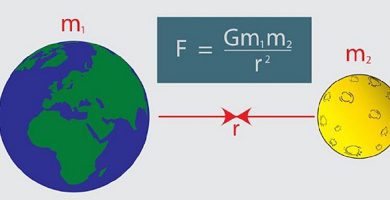What is chemical energy?
We explain what chemical energy is, what it is for, its advantages and disadvantages. In addition, its different uses and main features.
1.What is chemical energy?
When we talk about chemical energy , we mean the one that is contained or that is produced through reactions between the molecules of one or more compounds. That is, we talk about the internal energy that a body or a substance possesses, based on the types of chemical bonds that occur between its chemical components, and the amount of energy that can be released from reactions between them.
The chemical energy , just one of the ways in which energy manifests itself in reality, is always associated with matter and will manifest when it occurs in a particular modification. This may occur in the presence of heat sources, or other substances, with which an exchange of particles occurs, which generally produces heat, light or other forms of energy derived from the reaction.
Thus, chemical energy is a form of potential energy , contained in chemical substances , which once involved in a reaction are transformed into other usable forms of energy. Thus, for example, the combustion processes of gasoline and other fossil hydrocarbons operate .
The use of this form of energy may be relatively new in the history of mankind, but not in that of the world: since time immemorial life took advantage of photosynthesis and chemosynthesis, among other processes of obtaining energy, to take advantage to the molecular potential of matter.
2.What is chemical energy for?

Remember that according to the Principle of Conservation of Energy, the latter can be transformed into other types of energy, but not created or destroyed. And that chemical energy is a form of potential energy, which therefore serves to be transformed into other forms of energy that have practical applications in human life, such as light, thermal, kinetic energy , etc., to carry out a job.
For example, gasoline is used to convert chemical energy into kinetics, when we use it to mobilize a vehicle, such as a motorcycle.
-
Advantage
Chemical energy has the following advantages:
- It has a high performance . Large amounts of matter are not required to obtain energy from its molecules.
- Allows you to modify the subject . These chemical reactions not only produce energy, but also new forms of matter that in many cases can be perfectly usable to obtain new materials.
- Take advantage of waste materials . As in the cases of bioethanol or other biofuels, which are formed from organic matter that, in other cases, would decompose uselessly and would be garbage.
-
Disadvantages

On the other hand, chemical energy can have certain drawbacks, such as:
- It presents by-products . Many times these can be polluting substances, as in the case of fossil fuels that expel toxic gases into the atmosphere .
- It requires constant inputs . Since it runs out after the chemical reaction , maintaining the rate of chemical consumption or combustion demands more organic matter to fuel the reaction.
-
Chemical energy of food
The foods we consume every day are an ideal example of chemical energy and its use. These foods contain different organic substances necessary to provide energy to our body, such as the fuel of vehicle engines.
These organic substances are broken down in our body to obtain glucose (C6H12O6), the molecule whose oxidation during cellular respiration releases large amounts of caloric energy (calories) to keep the body going. Excess glucose thus becomes fat: a reserve just in case we need it later.
This is an example of the use of the chemical energy of glucose contained in food, to produce mechanical energy (move, stand up), sound (talk), electrical (the electricity of neurons that allows us to think), etc.
-
Examples of chemical energy
Some examples are the following:
- Fossil fuels . Gasoline, diesel, all petroleum- derived fuels, consist of sequences of molecules based on carbon and hydrogen whose bonds can be broken in the presence of oxygen (combustion), thus releasing large amounts of energy violently.
- The food we eat . As we explained before, the glucose contained in food is oxidized in our body and by breaking its bonds we obtain a useful caloric load to maintain the body’s energy.
- Bioluminescence . Many living organisms have the ability to produce light with their bodies, which is known as bioluminescence . That light energy comes from the chemical energy stored in their bodies.
- Space travel . Space rockets fly through the controlled reaction between various high-chemical substances (hydrogen and liquid oxygen, usually) that converts into huge amounts of kinetic energy.





